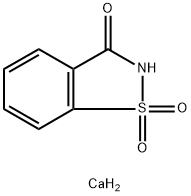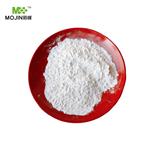Sodium saccharin is so widely used that it is often referred to simply as saccharin. The aqueous solubilities of both salts are about the same, ie, 0.67 g/mL. Saccharin, stable to heat over a wide pH range, can withstand most food processing conditions. Interactions between saccharin and other food ingredients have not been reported. Saccharin imparts a sweetness that is pleasant at the onset, but is followed by a lingering, bitter aftertaste. Sensitivity to this bitterness varies from person to person. At high concentration, however, most people can detect the rather unpleasant aftertaste. Saccharin is synergistic with other sweeteners of different chemical classes. For example, saccharin– cyclamate, saccharin–aspartame, saccharin–sucralose, and saccharin– alitame combinations all exert synergy to various degrees. The blends, as a rule, exhibit less aftertaste than each of the component sweeteners by themselves.
Calcium Saccharin is a sweetener that is the calcium form of sac-
charin, existing as white crystals of powder with a solubility of 1 g
in 1.5 ml of water. sodium saccharin is the more common form, but
calcium saccharin is available for nonsodium diets. in this form, it
is about 500 times as sweet as sucrose. see saccharin.

